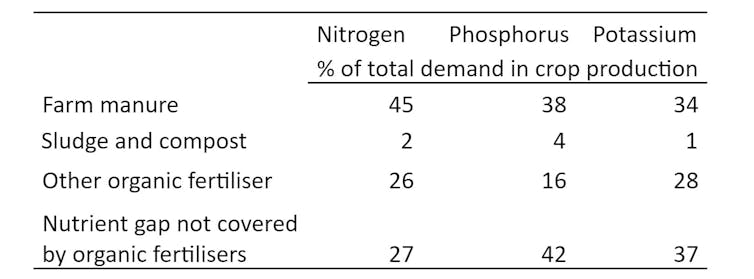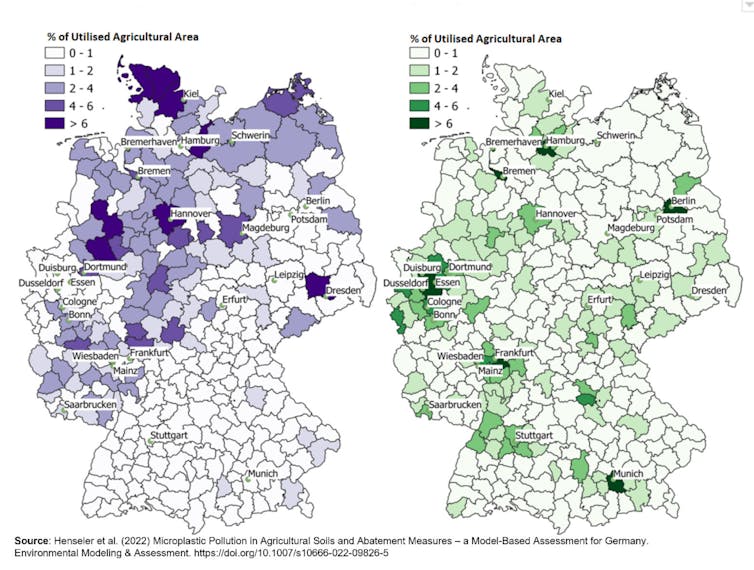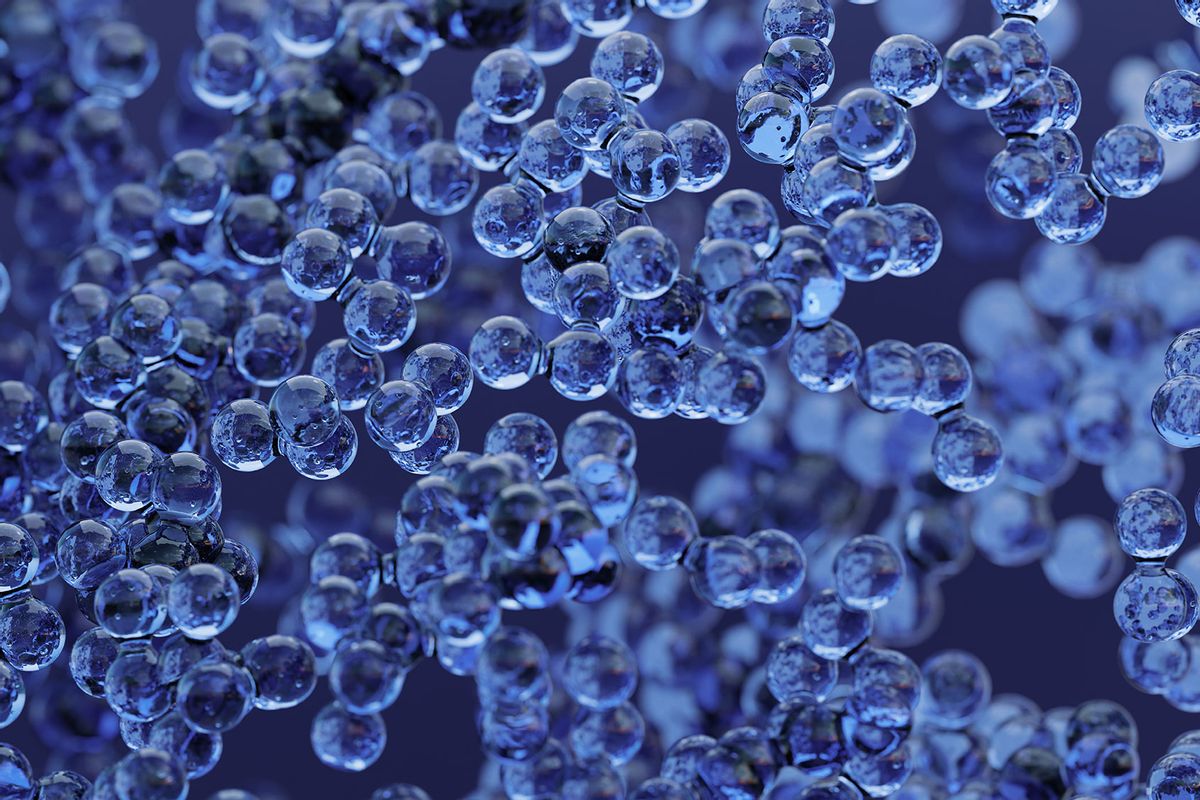Gazprom's decision to turn off the taps of Nord Stream 1 this month has rocked Europe's industrial and manufacturing sector, with fertilizer producers first in line.
This is because the production of synthetically derived fertilizers, which are manufactured from minerals, gasses from the air and inorganic waste materials, requires a huge amount of energy. By some accounts, the Haber-Bosch process, which converts nitrogen and hydrogen into ammonia, uses between 1% and 2% of all global energy produced annually. In Germany alone, ammonia production pumps up about 4.5% of the natural gas used by industries.
Organic fertilizers
So, what alternatives are left? The following organic fertilizers could represent one solution to alleviate the burden of increased costs for farmers and consumers. Let us weigh some of their pros and cons.
-
Manure. Used by farmers to boost crop yields since at least the neolithic age, manure is rich in primary nutrients necessary to plant growth, such as nitrogen, phosphorous, potassium and organic carbon. However, the food crisis has increased competition between farmers growing livestock feed and food (e.g. cereals) for land and could require us to reduce our consumption of animal products (e.g. meat). The reduction of herd size is also set to slash manure supply.
-
Sewage sludge and compost. A byproduct of private and industrial food consumption and processing, sludge and compost can replace some of the nitrogen and phosphor from synthetic fertilizers. They currently contribute little to Gemany's plant food, reaching from 1% to 4% of the nutrients demanded (see Table 1). However, better recycling processes could boost biowaste and compost production by 50% in the medium term.

Table 1: Quantity of nutrients contained in organic fertilizers as share of nutrients demand in German crop production. The data do represent the fertilization efficiency. Scientific Advisory Board on Fertilizer Issues (2015), Author provided
Fertilizers drenched in microplastics
There is a hitch, however. In recent years, research has shown microplastics have increasingly permeated organic fertilizers and agricultural soils, raising environmental and health concerns. While its impacts are still being gauged, some of the known culprits include littering and abrasive particles from tyre wear. Plastic films laid out on crops to prevent temperature fluctuations or water evaporation from soils known as mulch films are also suspected to emit them. Meanwhile, organic fertilizers compost and sludge soak up households and industry microplastics, accounting for a large part of the problem.
[More than 80,000 readers look to The Conversation France's newsletter for expert insights into the world's most pressing issues. Sign up now]
Microplastics pollution is at its worst in agricultural soils of urban regions, where locals typically produce high quantities of sludge and compost to go on to apply them as organic fertilizers. In Germany, for example, the problem is particularly acute in the country's industrial West, the Ruhrgebiet, or larger cities such as Hamburg or Hannover.

Area with microplastic pollution from sewage sludge (left) and from compost (right) in share of Utilised Agricultural Area (UAA) under high fertilisation intensity. Author provided, Fourni par l'auteur
Microplastics' health and environmental impacts: The state of research
Science on microplastics is still very much in its infancy. Research that has been carried out has suggested they play havoc with the soils' structure, release contaminants (e.g., plasticizers, flame retardants, light and heat stabilizers) and harm the soil biosphere.
It is even believed microplastics can enter crops and thus the food chain destined for food and human consumption. To this date, they have been found in mussels and fish, birds, marine and terrestrial mammals and yes, human beings.
Experiments conducted in laboratories (in vitro) have confirmed some of these hunches. In a 2019 paper, for example, scientists sprinkled microplastics on soil containing ryegrass and earthworms, resulting in the germination of fewer seeds, shorter shoots and greater soil acidity. However, we also know scientists apply higher microplastic concentrations under in vitro as opposed to natural conditions (in vivo).
This makes it particularly important for scientists to pursue in vivo experiments, which are more challenging to carry out than in vitro ones. This is because it is particularly tricky to distinguish soil from microplastic particles, while microplastics are also typically scattered across soils in small concentrations.
As for microplastics' health impacts, scientists think they present risks at three levels: first through the plastic particles themselves, secondly through the release of persistent organic pollutants absorbed by the plastics, and thirdly, the leaching of additives from the plastics. The complexity involved in the analysis of microplastics' endless combination of sizes, shapes and chemical signatures means there is currently little research about their health impacts.
More research is needed for better laws
Alarmingly, environmental legislation, be it at a German or EU level, does not have anything to say on the subject, handing farmers a free pass to contaminate their field.
Changing this will require urgently equipping lawmakers with better scientific research. In the meantime, however, there are practical steps policy-makers, farmers and citizens can take to slash our dependence on synthetic fertilizers amid the war in Ukraine. The first is to relocalize our food production and make it less dependent on trade, as Europe had already begun to do so during the Covid-19 crisis. We can also already start to improve the recycling processes of alternative organic fertilizers to substitute synthetic fertilizers in line with the EU's Nutrient Management Plan from its circular-economy strategy.
Absent any measures, microplastic pollution will continue to accumulate in our ecosystems and possibly even bloodstreams.
Martin Henseler, Research engineer, Equipe d'Economie Le Havre Normandie, Université Le Havre Normandie
This article is republished from The Conversation under a Creative Commons license. Read the original article.

Shares